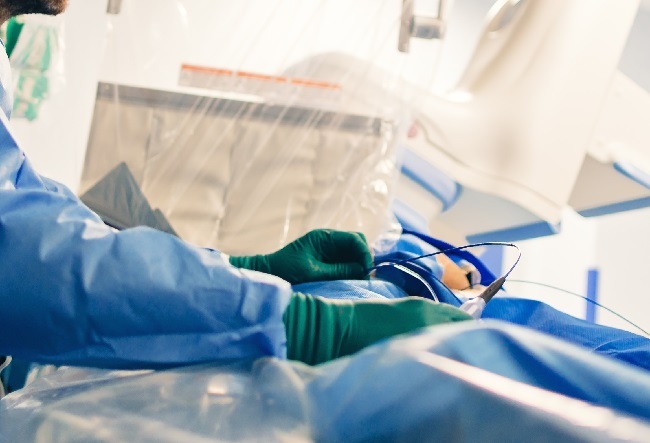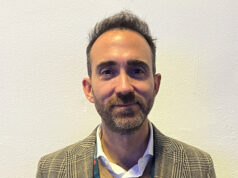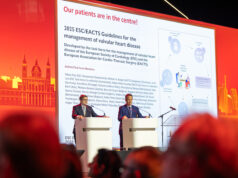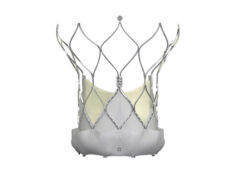This advertorial is sponsored by Boston Scientific
 Today there are more than 75,000 transcatheter aortic valve implantation (TAVI) procedures performed across Europe per year. Stroke—which occurs in the range of 2–4% of TAVI cases—remains a major concern for patients undergoing the procedure. Cardiovascular News has interviewed some of Europe’s foremost experts to shine a light on how stroke affects patients, what physicians may consider when talking to their patients about stroke, and considerations for preventing stroke.
Today there are more than 75,000 transcatheter aortic valve implantation (TAVI) procedures performed across Europe per year. Stroke—which occurs in the range of 2–4% of TAVI cases—remains a major concern for patients undergoing the procedure. Cardiovascular News has interviewed some of Europe’s foremost experts to shine a light on how stroke affects patients, what physicians may consider when talking to their patients about stroke, and considerations for preventing stroke.
“Ischaemic stroke, and in particular disabling stroke, is a devastating complication of TAVI which during the early phase, is mainly due to debris embolisation during the procedure,” says George Ntaios, professor of Internal Medicine at the University of Thessaly, Greece and President of the Hellenic Stroke Organization, explaining why stroke is relevant to TAVI operators. “It can have a very poor prognosis, as it significantly increases mortality, decreases the patient’s quality of life, and increases associated healthcare costs.”
The occurrence of stroke can have wide-reaching impacts for patients, who may be confronted with life-changing outcomes; their families, who may be faced overnight with the challenges of providing hands-on care for a loved one; and healthcare systems, due to the myriad of specialists needed to treat stroke patients. There are also societal costs, with stroke accounting for an estimated €45 billion in cost throughout the European Union in 2015, of which 44% relates to direct health costs, 22% to lost productivity and the remaining 35% related to the cost of informal care provided by families of patients.
Citing his work with ALICe Italia in the Lazio region of Italy, Fabrizio Pennacchi tells Cardiovascular News that he believes there has been an improvement in the awareness of the dangers of stroke among the general population. Allied to improvements in the administration of care in the acute phase, this has seen stroke outcomes improving over time.
“The admissions for stroke from the year 2007 to 2019 have gone down 30%,” he comments, pointing to data from his locality. The mortality rate within one month of stroke in this timeframe has fallen by around 20%, Pennacchi explains, adding that while this is a positive development, it still means that stroke patients have a “one-in-five chance of not returning home”. “That is why we continue to do work on the awareness of the signs of stroke,” he says, highlighting the various campaigns led by ALICe to communicate stroke prevention and treatment strategies to the public, and to healthcare providers throughout Italy.

Echoing the comment of Ntaios, Pennacchi pinpoints disability as one of the lasting impacts of stroke that patients and healthcare providers need to be aware of. This can range from “less severe” impairments such as difficulty with speech, inability to concentrate, or changes in motor function that may prevent individuals regaining their full quality of life, through to more extreme physical disabilities requiring specialist care.
“Every patient has their own story,” Veerle De Herdt (Ghent University Hospital, Gent, Belgium), member of the Scientific Board of the Belgian Stroke Council and stroke neurologist, comments: “Less than one third of patients completely recover from stroke—this is really dramatic. When you have had a stroke you have a great chance of having to live with stroke sequelae and this will impact daily life in almost all patients, even in minor strokes.”
The Belgian Stroke Council has focused its communication efforts on ensuring that patients are able to recognise the signs of stroke and what to do, including promoting the ‘FAST’—face, arm, speech, time—test, which underscores the importance of rapid treatment.
Stroke neurologist Dimitri Hemelsoet (Ghent University Hospital, Gent, Belgium), a member of the Scientific Board of the Belgian Stroke Council, says that communication initiatives such as these, as well as new treatment approaches including endovascular therapies, have led to a “paradigm shift” in the perception of stroke in the last decade. However, he says, patients may still be unaware of the recovery path that lies ahead after a stroke.
“It is very difficult to create awareness on the possible consequences of stroke,” Hemelsoet comments. “It is difficult to imagine what a neurological symptom is.”
As well as physical and neurological impacts, Ntaios also points out the emotional toll that the condition can have on patients and their families. “Stroke has a significant psychological impact,” he says. “Post-stroke depression and anxiety are common and can significantly affect patients’ ability, motivation, initiative, extraversion, and disposition to socialise, participate, and be active.”
Disabling stroke
This psychological impact can be acutely felt in patients who suffer disabling stroke, an outcome that is estimated to occur on average in around 1.3% of TAVI cases. For Carla Zanferrari (ASST Melegnano Martesana, Milan, Italy) and Federica De Santis (SS Filippo and Nicola Hospital, Avezzano, Italy), two Italian neurologists who treat stroke patients daily, the “emotional” impact of the event can often be a forgotten factor.
“There are two phases after stroke,” says Zanferrari. “If they have a disability, the first period is quite difficult because they have to think about their life in a completely different way. The impact is not only for them but also for their family. In a day you have to completely change your life. Both in a psychological sense but also in a practical sense.” De Santis also highlights the impact that disabling stroke has on the families of patients, adding: “Very debilitating stroke makes it difficult to speak, to move, and for those who have to take care of them. It is a great problem”.
Both Zanferrari and De Santis highlight that the road to recovery for stroke patients can often be long, involving many healthcare professionals to guide the way, including neurologists, nurses, rehabilitation specialists, psychologists and logotherapists to name but a few of the specialists often present.

“Ongoing support, listening to what the patient, family and caregivers have to say, and providing personalised education, information and advice with simple words and clear messages are important throughout the patient journey,” Ntaios adds, reflecting on the road to recovery. “When we have a patient in our office after a stroke, our role extends far beyond our medical capacity,” he says, commenting that the role of the stroke specialist is that of a “health manager” to guide care in a holistic manner.
According to Pennacchi, stroke associations can play an important role in supporting patients who have recently suffered a stroke, and act as a forum to bring stroke patients and their families together to share their experiences. “Nowadays, compared to 15 or 20 years ago, there are a lot of resources that can help families orient themselves,” he comments.
Returning to TAVI and stroke, Zanferrari recommends that operators consider the history of the patient when weighing up their risk of stroke. “The history of cerebral ischaemic events, the presence of atrial fibrillation and other factors, such as body mass index, can influence the patient’s risk” she comments, adding that the risk should be defined based upon the individual factors of each patient.
Ntaios adds that as TAVI moves towards a lower risk, younger patient population, the need to reduce stroke risk will be ever greater, as patients will live longer after their procedure. “As it is the case for all TAVI candidates, these patients should be advised not only about the benefits that TAVI will offer, but also about the associated stroke risk and the available ways to reduce it,” Ntaios reflects.
Subclinical cerebral lesions
Further to this, Hemelsoet highlights the importance of subclinical cerebral lesions, as another important area for recognition. “It has been shown that silent brain lesions following TAVI are quite important and they can have a major impact on cognitive function or recovery that might be underestimated,” he says. “Not every patient that gets a TAVI will be scanned with a brain MRI to look for silent lesions.”
 Both Hemelsoet and De Herdt agree that “no stroke is innocent”, with De Herdt telling Cardiovascular News “every stroke is a stroke too many”. With TAVI procedures likely to expand into a broader population, Hemelsoet comments that stroke is an outcome that must not be neglected. “I think it is important to stress the recognition of stroke symptoms and the fact that stroke can be a complication following TAVI,” he says.
Both Hemelsoet and De Herdt agree that “no stroke is innocent”, with De Herdt telling Cardiovascular News “every stroke is a stroke too many”. With TAVI procedures likely to expand into a broader population, Hemelsoet comments that stroke is an outcome that must not be neglected. “I think it is important to stress the recognition of stroke symptoms and the fact that stroke can be a complication following TAVI,” he says.










